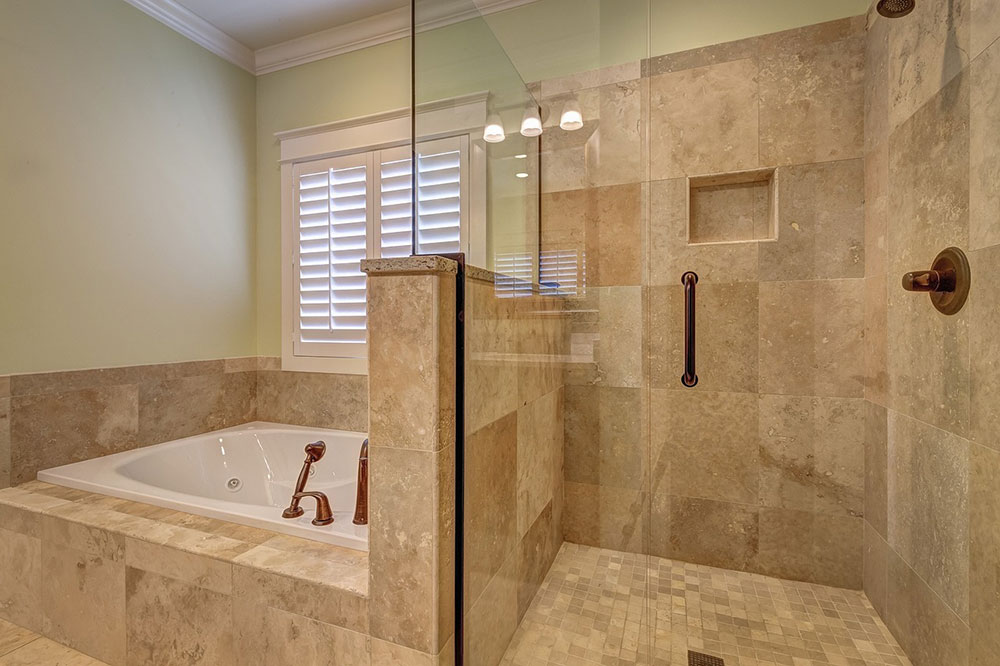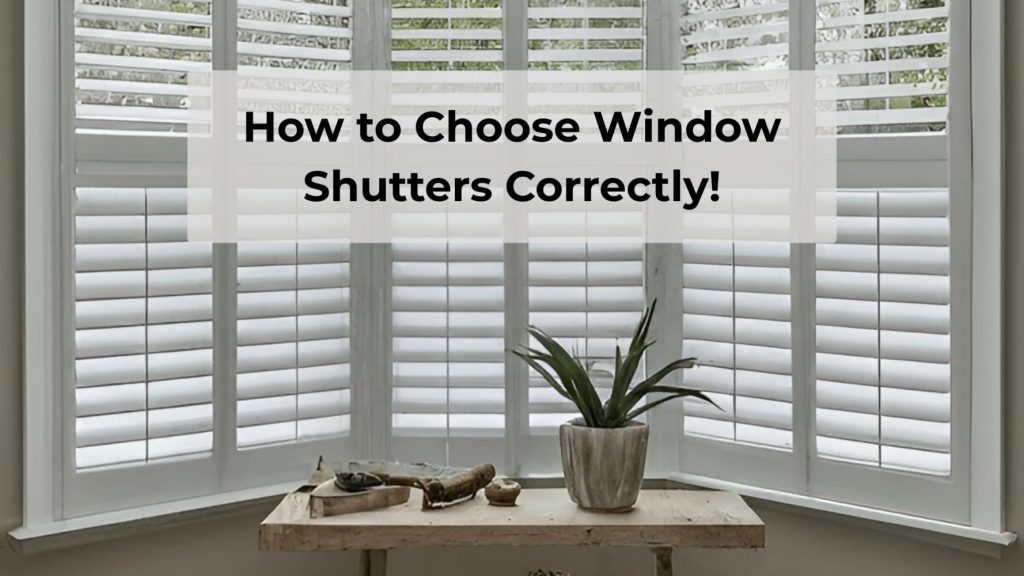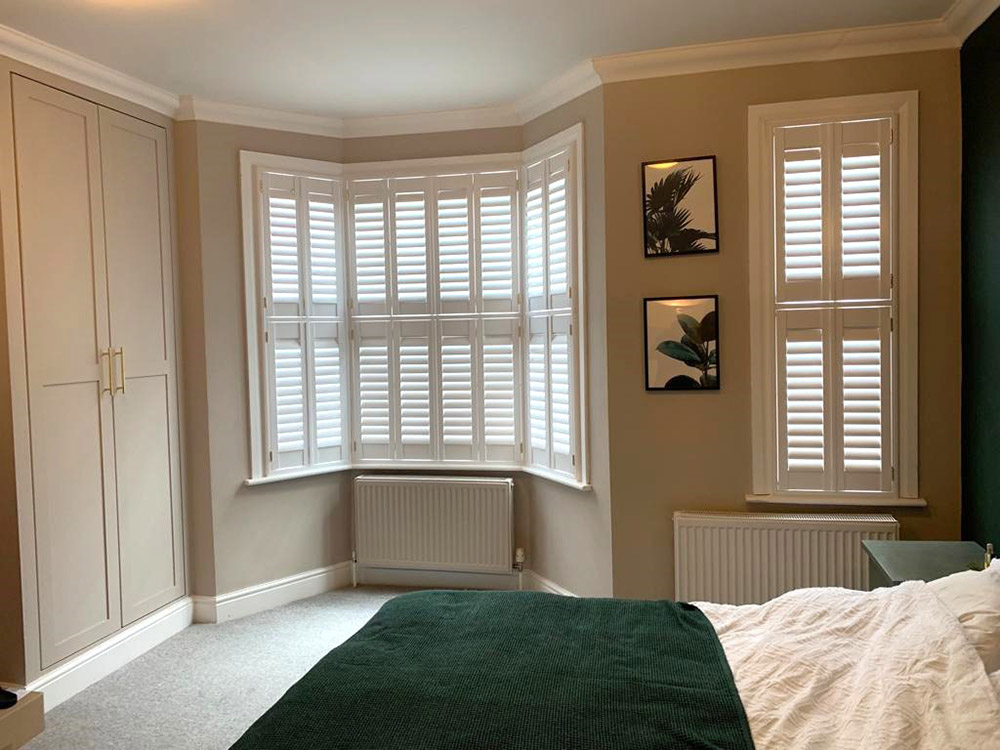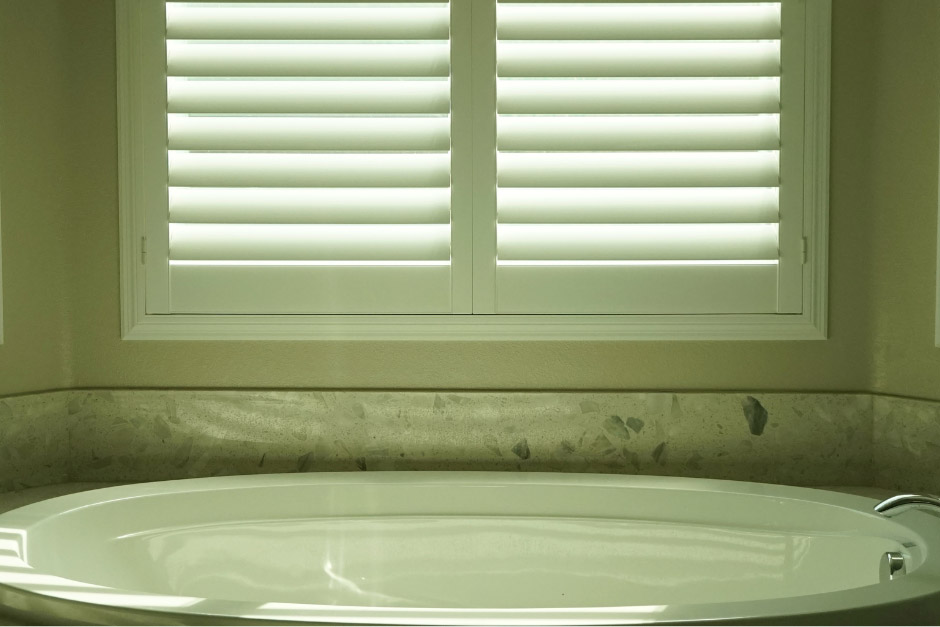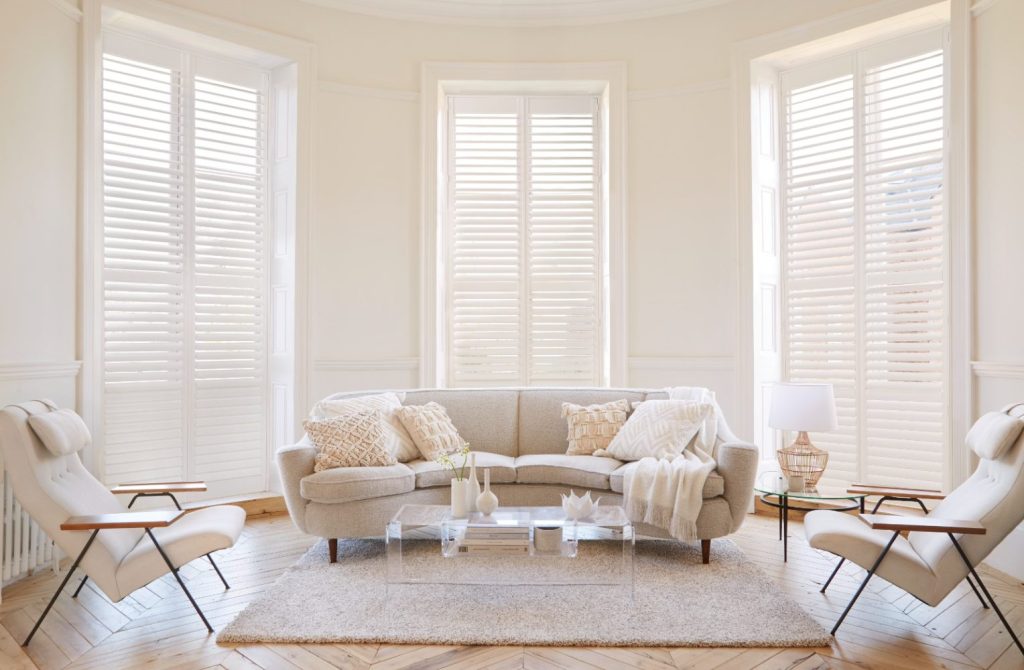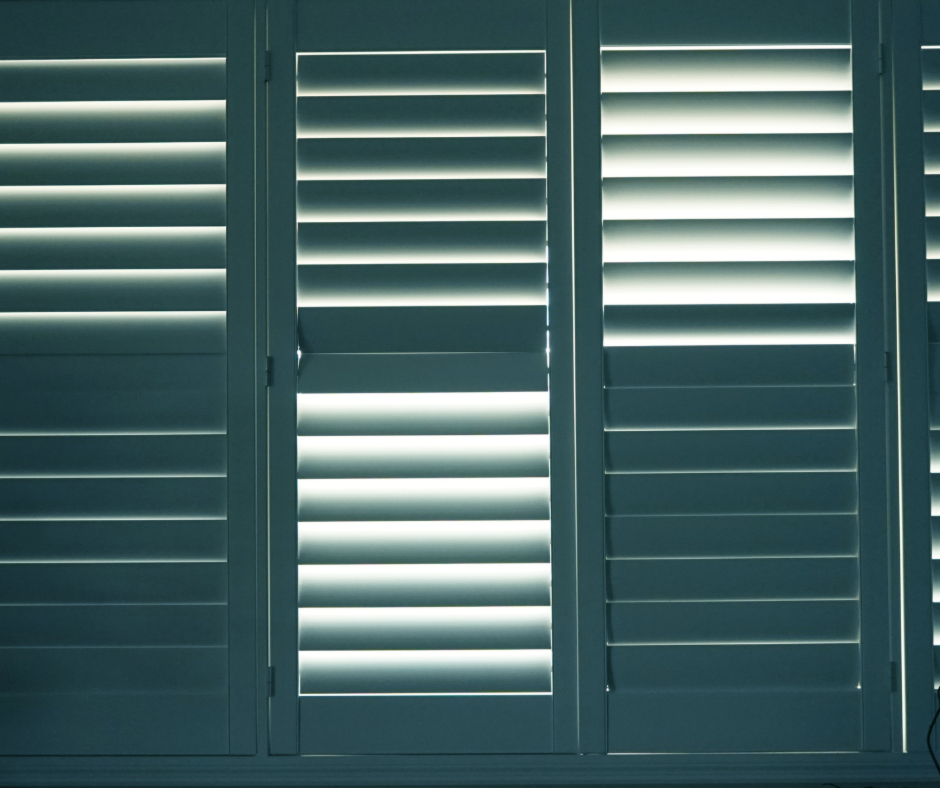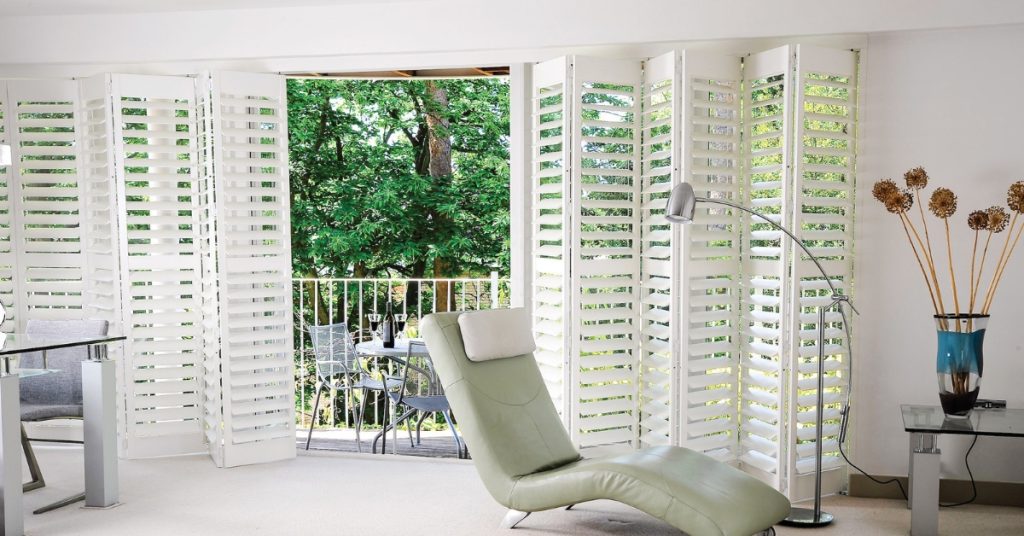When it comes to selecting the perfect shutters for your home, the terms “waterproof” and “water-resistant” are often used interchangeably. However, understanding the nuances between these two terms can make a significant difference in ensuring the longevity and functionality of your shutters. In this blog post, we’ll dive deep into the world of waterproof and water-resistant shutters, unravelling the distinctions and empowering you with the knowledge to make an informed decision for your home.
The most durable and waterproof shutter within our range!
The Difference Between The Two Terms
“Waterproof” means impermeable by water, meaning it does not allow any moisture to penetrate or pass through. “Water-resistant” refers to the ability to resist the penetration of water to some degree but not entirely. The key difference is therefore that waterproof refers to complete impermeability to water, while water-resistant refers to limited resistance that can eventually be overcome with enough water exposure over time. For shutters, being waterproof means they can withstand direct exposure to water sources like showers without any seepage. Water-resistant shutters will protect against minor splashes and humidity but may warp or stain with constant heavy exposure.
| Waterproof shutters | Water-resistant shutters |
| Waterproof shutters have non-porous, fully sealed surfaces that prevent any water penetration. | Water-resistant shutters utilise waterproof coatings or sealants that block moisture while still allowing some permeability and potential leakage over time. |
| Waterproof shutters are ideal for bathrooms, around hot tubs/pools, marine environments, and very humid climates where heavy condensation is constant. | Water-resistant shutters are suitable for areas with moderate humidity like living rooms and bedrooms away from major moisture sources. |
Limitations Of Water-resistant Shutters
While water-resistant shutters offer an added layer of protection against moisture, they are not suitable for areas that are often exposed to high levels of humidity or direct water contact. For instance, installing water-resistant shutters in a bathroom or kitchen may not be the most ideal choice, as these areas are prone to frequent moisture exposure from showers, steam, or cooking. If you’re looking for shutters specifically designed for bathroom spaces, check out our guide on bathroom plantation shutters for the best options.
Factors to Consider in Shutter Selection
-
Weather Conditions
The climate and weather patterns in your area play a crucial role in determining the appropriate level of water protection required for your shutters. Regions with high humidity, like coastal environments may necessitate the use of waterproof shutters to withstand the constant moisture exposure. Conversely, drier climates with low humidity levels may allow for the use of water-resistant shutters.
-
Location
The specific location where the shutters will be installed is another important factor to consider. Shutters intended for bathrooms, kitchens, or any room with direct exposure to water sources should be waterproof to prevent water damage and ensure longevity. On the other hand, water-resistant shutters may be suitable for rooms with minimal moisture exposure, such as bedrooms or living areas.
-
Frequency Of Exposure To Water Or Moisture
In addition to the location, the frequency of exposure to water or moisture should be evaluated. If the shutters will be subjected to constant or frequent water exposure, such as in a bathroom with multiple daily showers, waterproof shutters are the recommended choice. However, if the exposure is occasional or minimal, water-resistant shutters may provide adequate protection.
-
Cost
While waterproof shutters offer superior protection, they typically come with a higher price tag compared to water-resistant options (Not sure how much shutters cost? Read our breakdown on shutter pricing to plan your budget effectively). It’s important to consider your budget and weigh the long-term benefits of waterproof shutters against the initial investment. Water-resistant shutters may be a more cost-effective solution for areas with lower moisture levels, but the potential for water damage and replacement costs should also be factored in.
Materials Used
When it comes to waterproof shutters, the materials used play a crucial role in their performance. Their construction is meticulously engineered to prevent any water from seeping through, making them an ideal choice for areas prone to high levels of moisture, such as bathrooms and kitchens.
Water-resistant shutters are often made from materials like wood or engineered wood products that have been treated with water-repellent finishes or sealants. These treatments help to slow down the absorption of water into the material, providing a temporary barrier against moisture. However, it’s important to note that over time, and with repeated exposure to water, these shutters may eventually succumb to water damage or warping.
Tips To Pick The Right Shutter For You
-
Assessing Your Needs
Before selecting shutters, it’s essential to assess your individual needs and requirements carefully. Consider the specific moisture levels in each room, the frequency of water exposure, and your personal preferences regarding aesthetics and functionality. This assessment will guide you in determining the appropriate level of water protection required.
-
Consulting With Professionals When Needed
If you are uncertain about the best choice for your home, consulting with professionals can be beneficial. You may also want to explore shutter placement to determine the best areas for installation. Interior designers, contractors, or shutter experts can provide valuable insights based on their experience and knowledge. They can help you navigate the options and make an informed decision tailored to your specific needs.
-
Understanding Product Specifications
When considering waterproof or water-resistant shutters, thoroughly review the product specifications and warranties provided by the manufacturer. Look for details on the materials used, water resistance ratings, and any guarantees or warranties offered. This information can help you make an informed decision and ensure you receive a product that meets your expectations.
-
Considering Long-term Aspects
While the initial cost is essential, it’s also crucial to consider the long-term maintenance and durability of your shutters. Waterproof shutters typically require less maintenance and have a longer lifespan, potentially saving you money in the long run by avoiding costly replacements or repairs due to water damage. Weigh these long-term factors against the upfront costs to determine the most cost-effective and practical solution for your home.
Conclusion
Ultimately, the decision between waterproof and water-resistant shutters comes down to your specific needs and the unique conditions of your home. By understanding the differences between these two terms, you can make an informed choice that not only enhances the aesthetics of your living spaces but also ensures long-lasting protection. Regardless of your choice, remember that the key to maintaining the longevity and functionality of your shutters lies in choosing a reliable company like London Interior Shutters.
Get in touch with us today to get the perfect shutters for your home. Call 0800 023 5044.


